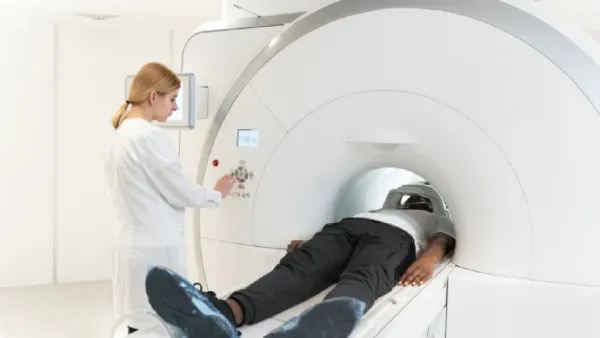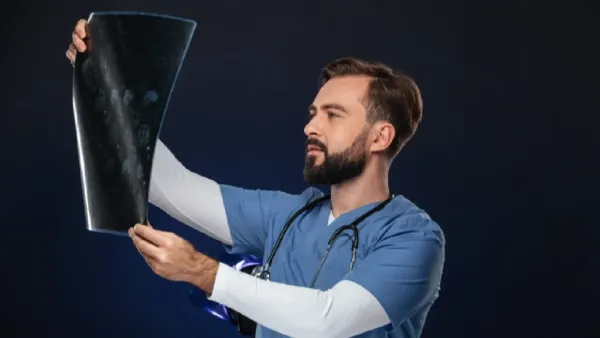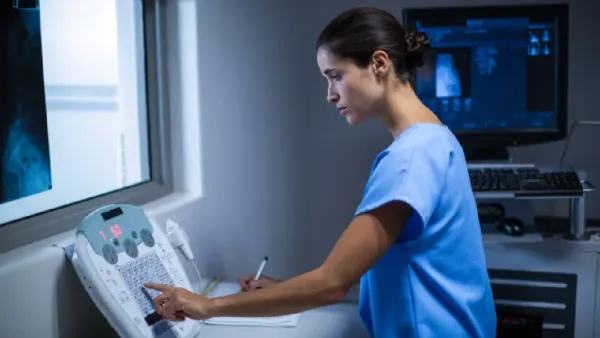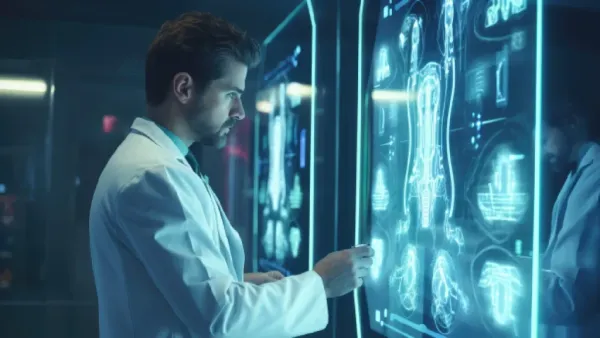

In April 2025, AI in Radiology took another set of subtle but influential strides—a field where innovation is very often relegated to the background but has an immediate effect on lives. Throughout the last month, a number of new technologies were unveiled, significant research was reported, and health systems took a step further toward integrating AI as a normal component of medical imaging processes.
From stroke diagnosis to low-field MRI enhancements, and from mammography trials to FDA clearances, AI in radiology has matured beyond experimental phases. It is becoming both more sophisticated and more trusted, not just by radiologists, but by patients, healthcare administrators, and regulators.

Here’s a deep dive into the most significant AI developments in radiology from April 2025 and what they say about where the field is headed.
FDA Clearances Indicate Stepped-Up Momentum
April brought a new tide of regulatory go-aheads for AI radiology software, indicating growing confidence in the technology’s safety, reliability, and clinical value. Multiple major solutions gained approval from the U.S. Food and Drug Administration, reflecting continued momentum: AI is no longer an academic concept—it is entering the hospital and clinic doors with official support.
Among the highlights was the clearance of Brainomix 360, a stroke analysis software intended to enable clinicians to review scans quickly and precisely within the critical early care window. The software interprets non-contrast CT scans and provides assessments using the ASPECTS score, a measure applied to identify stroke severity. In emergency departments, where time is of the essence between recovery and lasting harm, such a tool has a tangible, real-world influence.
In another significant update, Radiobotics unveiled a new release of its RBfracture program, intended to spot fractures in X-rays for children and adults. The new algorithm has improved sensitivity and is specifically programmed to find faint breaks that even the trained eye occasionally misses.


At the same time, Gleamer got regulatory approval for BoneMetrics, which helps to assess bone condition, a significant field when populations grow older and osteoporosis diagnoses increase. Such tools may appear mundane, but mark the expansion of AI applications from high-risk conditions such as cancer or stroke into more general diagnoses.
The pace and number of these approvals in one month indicate an administrative climate that is no longer reluctant to embrace AI in radiology. The debate now is on implementation, performance, and confidence.
AI and Stroke Care: Integration Over Innovation
One of the most useful and broadly relevant April examples of AI progress was the addition of StrokeSENS AI scoring to Aidoc’s Full Brain platform, with Circle Cardiovascular Imaging. Instead of developing yet another isolated tool, this collaboration is a textbook example of integration: ensuring that AI tools are bolted in where doctors already labor, instead of making them learn or switch among several platforms.
This is a crucial change. For healthcare AI to scale, it must integrate with existing systems without disturbing workflows. And that’s exactly what these integrations are intended to do—enhance radiologists’ work without introducing additional screens, additional clicks, or additional complexity.


Mammography Gets a Patient-Focused Update
Breast cancer screening by AI is constantly moving forward, and April was no exception in terms of technical and human progress. In the UK, April saw the National Health Service introduce the largest trial ever to assess how well AI can interpret mammograms. The trial will scan more than 700,000 images and try to determine if AI might be as good as or even superior to radiologists when doing routine checks.
While the scale is massive, what caught our attention this month was a U.S. study on patient attitudes toward AI-enhanced mammography. The survey showed that many patients are okay with AI tools as a second opinion—what scientists refer to as a “backup reader.” Trust plummeted, however, when patients were informed that AI could make decisions without human input.
This is significant to an essential subtlety in bringing AI into critical clinical spaces. Patients are receptive to help, but not to control. And their tolerance levels vary by age, history of cancer, and socioeconomic status. For developers and hospitals, this is a call that embracing AI isn’t merely a matter of technology—it’s a matter of communication.
Improving Imaging in Difficult Conditions
Technically, April brought significant strides towards utilizing AI to improve imaging quality from lower-cost machines, particularly low-field MRIs. These are less expensive and more transportable but generally have poorer image quality. That compromise has diminished their application in precision diagnostics.


Today, that is no longer true with technology such as Optive AI. Optive can optimize the anatomical content of ultra-low-field MRIs on the fly so clinicians can read previously too blurry images for specific interpretations. This technology may unlock new paths to early diagnosis and follow-up treatment in resource-constrained environments or mobile health clinics, where high-end MRI is out of the question.
Another software that was in the spotlight this month was MSKai, an AI-based solution for spinal MRI reading. It employs machine learning to segment and label vertebral anatomy on T2-weighted images, making diagnosis more efficient for lumbar disc problems, stenosis, and associated conditions. These capabilities are important in high-volume imaging centers, where a single misinterpreted or delayed report can affect care timelines.
The Push for Sustainability and Efficiency
With the increasing usage of AI tools in radiology, there are also benefits and costs in terms of operations and the environment. One of the more progressive articles this month discussed the sustainability of medical imaging’s adoption of AI. The article pointed out that AI can curtail low-value imaging and avoidable follow-up exams. Still, training and deployment of large models require a lot of computer processing capacity and power.
The report called for a turn towards more efficient AI architectures and more intelligent deployment strategies. Not every rural clinic, for instance, requires a cloud-connected GPU farm. A lightweight, edge-friendly model can accomplish much of the work locally. The message was plain: efficiency and equity must travel together.


A Changing Role for the Radiologist
Maybe the most significant trend in April was not associated with one technology or paper—it was the increasing understanding that AI is transforming the function of the radiologist, but not eliminating it.
AI applications highlight anomalies, provide initial reports, or aid with measurements. However, the ultimate interpretation is reserved for the human clinician in virtually every implementation. This shared model is proving to be the sweet spot: AI does the repetitive, the mundane, and the emergency triage, and radiologists deal with tricky cases, patient interactions, and quality assurance.
That partnership-based model of replacement, rather than replacement based on partnership, appears to be gaining traction throughout the industry. And it’s a trend that appears likely to continue.
Looking Forward
The radiology AI developments of April 2025 depict a rapidly growing field. AI technologies are improving, becoming more specialized, and incorporated into routine practice. Meanwhile, focus is turning from ability to influence—from “can we do this?” to “how well does it perform in actual clinical environments?”


As hospitals increase their AI deployments and patients become increasingly aware of their use, trust, explainability, and sustainability will dictate the next wave of adoption.
If April is any guide, the future of AI in radiology isn’t merely smarter—it’s more practical, inclusive, and collaborative than it’s ever been.
-
Derbyshire’s Pat Brown: ‘I wasn’t a one-trick pony … but I’m a much better cricketer now

-
Tom Moores swings Outlaws to victory

-
India, Canada to reinstate high commissioners soon

-
Teen's desperate bid to stop killer dad's cocaine-fuelled Christmas Day massacre

-
Mumbai: Commuters Launch Petition Over Poor Frequency Of BEST Bus From Nariman Point To CSMT; See Pics
